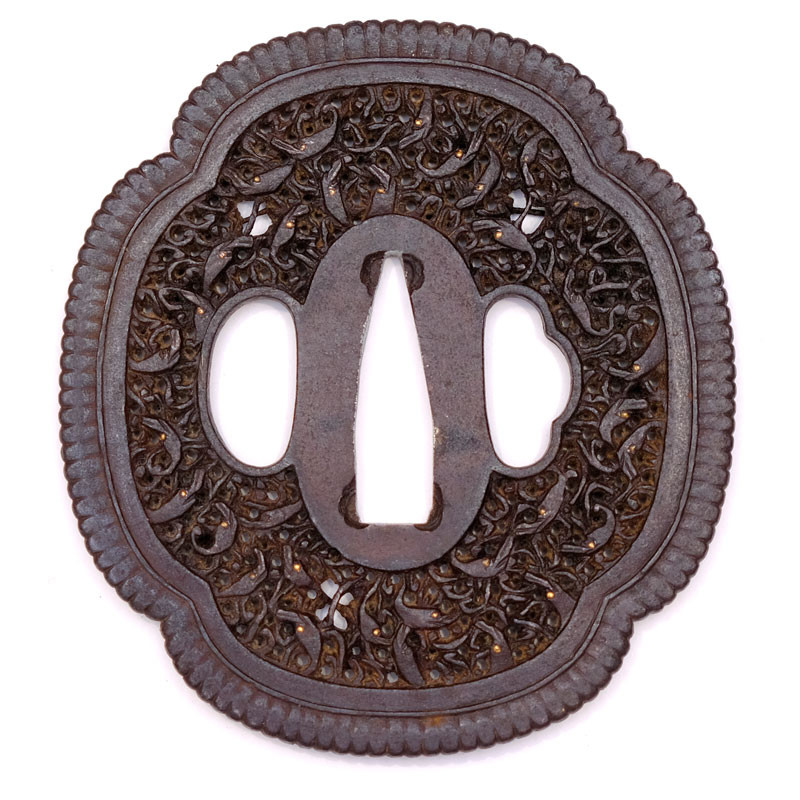





More informations about this product
Mumei (unsigned), Mokko Gata (quadrilobed), Kogai and Kogatana Ana, Edo period (around 1800).
Dimensions (cm): Height 8.02 x width 7.35 x thickness 0.4
Weight: 97g
Patterns of marine animals (squid or shrimp) with golden eyes on a very fine Karakusa (arabesque) background.
This is a very high quality Nanba tsuba, the fineness of the opening work is remarkable.
“Nanban” 南蛮 means “Southern Barbarians”, and refers to a type of Tsuba with foreign influences. There is no “Nanba” school, it is above all a style.
Originally, this style developed in the 16th century. It came mainly from China and was often made and purchased by merchants in Canton. This is why we find a Sino-Tibetan style. The Japanese then copied this style, particularly in the ancient province of Hizen (Kyushu) which was in regular commercial and diplomatic exchanges with foreigners thanks to the port of Nagasaki.
We also find the Karakusa pattern style very typical of the Kyushu region.
During the Edo period, when the Samurai lost their status and became Ronin for many, they signed up as pirates or found refuge in other countries in mainland Asia. They then often wore this style of Tsuba on their sword mounts.
One of the only Japanese blacksmiths to work in this Nanba style was Kunishige, on the island of Hirado, in the northwest of the island of Kyushu.
Although it is a style, there are still specialized schools such as the Yagami 矢上 school, which began in the 18th century with Mitsuhiro. They were located on the outskirts of Nagasaki and used motifs of dragons, monkeys, hares and shrimps... Their Tsuba Nanba productions were with very delicate and fine opening work, like the Tsuba presented.
From the commercial side, Nanba productions are often of average quality but there are, like this tsuba, pieces of very good quality!
Share your opinion
error Your review appreciation cannot be sent
feedback Report comment
check_circle Report sent
error Your report cannot be sent